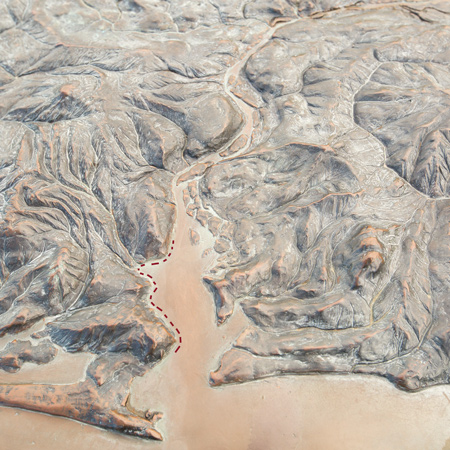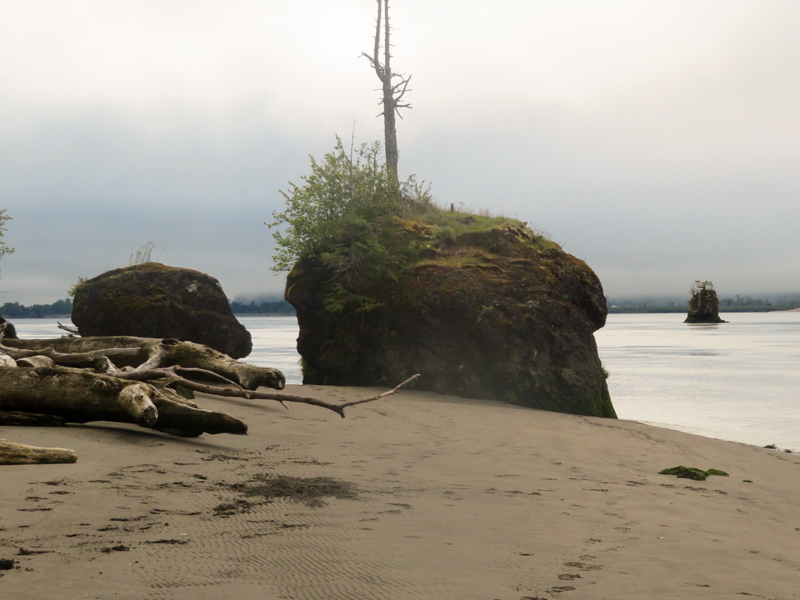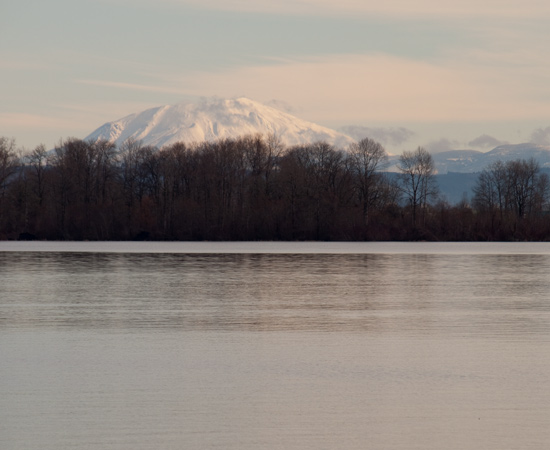Having decided to winter over on the Columbia River’s southern shore, they leave Station Camp. After paddling nine miles up the Columbia, they attempt to cross but are turned back by high waves. With Mt. St. Helens in view, they continue upriver and encamp near Pillar Rock.
Backtracking up the River
by Yellowstone Public Radio[1]Originally aired weekdays by Yellowstone Public Radio during the Bicentennial observance of 2003-2006. Narrated by Hal Hansen. Scripts by Whit Hansen and Ed Jacobson. Produced by Leni Holliman. © … Continue reading
Mouth of the Columbia River
© 2015 by Kristopher K. Townsend. Permission to use granted under the Creative Commons Attribution-Share Alike 4.0 International license.
Above: the red line approximates their return to Pillar Rock.
A Pleasant Morning
We had a clear pleasant morning. Our Officers had concluded on crossing the River, & endeavor to find out a suitable place, for our Winter Quarters. Our officers purchased from the Natives 2 more Sea Otter Skins.
—Joseph Whitehouse
Leaving Station Camp
We loaded our Canoes, and set off in order to go up the River, & to cross over the River where it was narrower.— We proceeded on up the River about 9 Miles, where we attempted to cross it, but the Waves ran so high that we found it impracticable.
—Joseph Whitehouse
Return to Pillar Rock
we Dined in the Shallow Bay [Grays Bay] on Dried pounded fish, after which we proceeded on near the North Side of the Columbia, and encamp a little after night near our Encampment of the 7th instant near a rock at Some distance in the river.
—William Clark
Mt. St. Helens from Little Cape Horn
© 19 December 2010 by Kristopher K. Townsend. Permission to use granted under the Creative Commons Attribution-Share Alike 4.0 International license.
In 1805, the above view included a beautifully rounded cone atop this young Cascadian Fault Zone volcano. The 1980 eruption removed 1300 feet from the mountain’s height.
Mt. St. Helens
evening Cloudy the Winds of to day is generally E. S. E which was a verry favourable point for us as the highlands kept it from us Mt. St. Hilians Can be Seen from the mouth of this river.
—William Clark
Weather Diary
Day of the month Wind State of the Weather 25th E S E cloudy after rain Some Showers of rain last night
—Meriwether Lewis[2]Some abbreviations have been spelled out.
Middle Village-Station Camp is a High Potential Historic Site along the Lewis and Clark National Historic Trail managed by the U.S. National Park Service. The site provides interpretation and is part of the Lewis and Clark National and State Historical Parks.
Notes
| ↑1 | Originally aired weekdays by Yellowstone Public Radio during the Bicentennial observance of 2003-2006. Narrated by Hal Hansen. Scripts by Whit Hansen and Ed Jacobson. Produced by Leni Holliman. © 2003 by Yellowstone Public Radio. |
|---|---|
| ↑2 | Some abbreviations have been spelled out. |
Experience the Lewis and Clark Trail
The Lewis and Clark Trail Experience—our sister site at lewisandclark.travel—connects the world to people and places on the Lewis and Clark Trail.
Discover More
- The Lewis and Clark Expedition: Day by Day by Gary E. Moulton (University of Nebraska Press, 2018). The story in prose, 14 May 1804–23 September 1806.
- The Lewis and Clark Journals: An American Epic of Discovery (abridged) by Gary E. Moulton (University of Nebraska Press, 2003). Selected journal excerpts, 14 May 1804–23 September 1806.
- The Lewis and Clark Journals. by Gary E. Moulton (University of Nebraska Press, 1983–2001). The complete story in 13 volumes.






